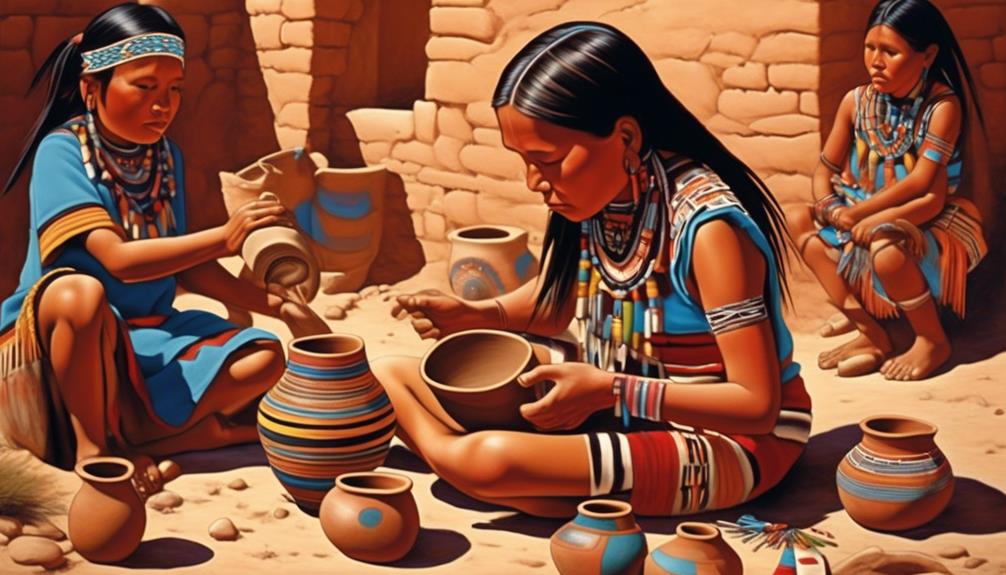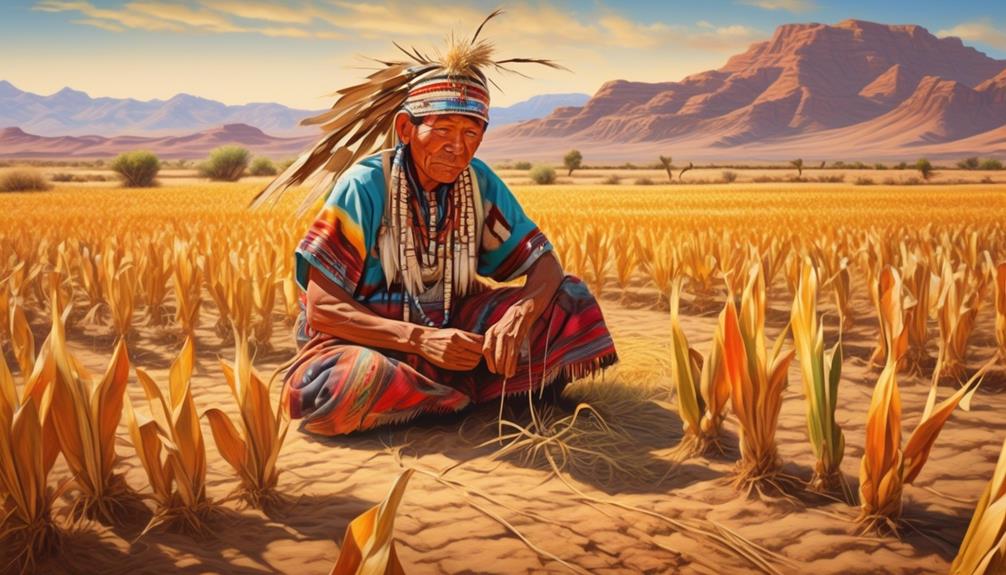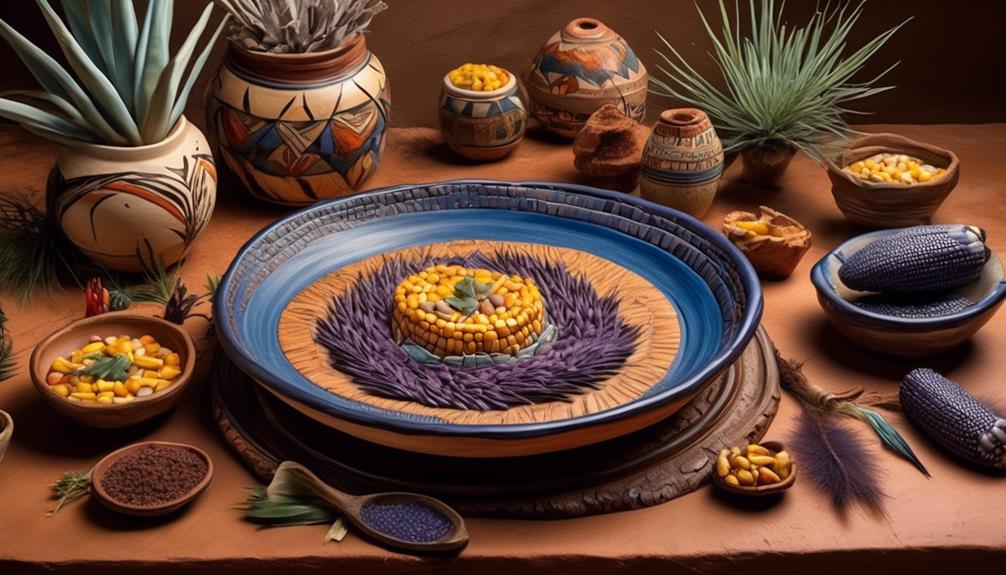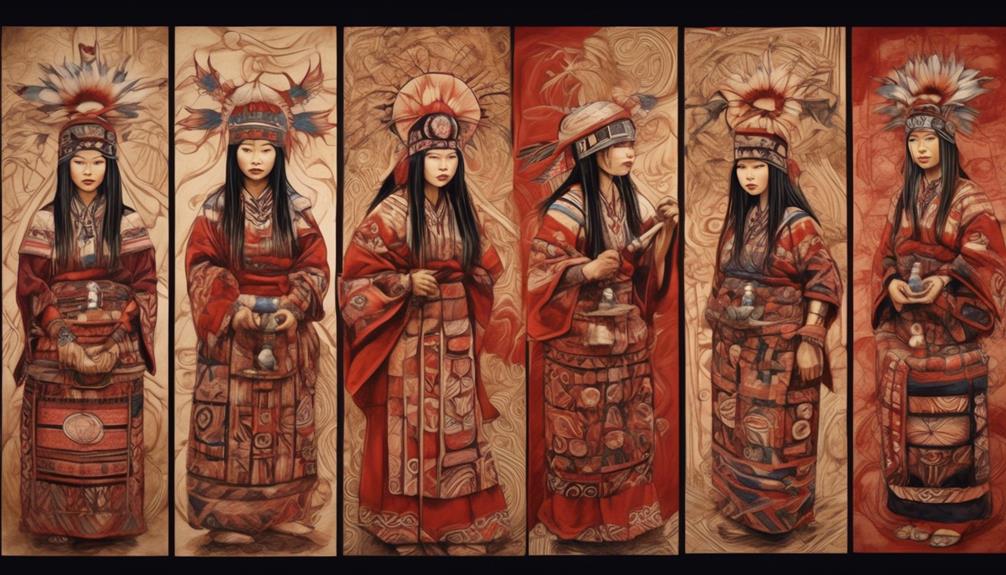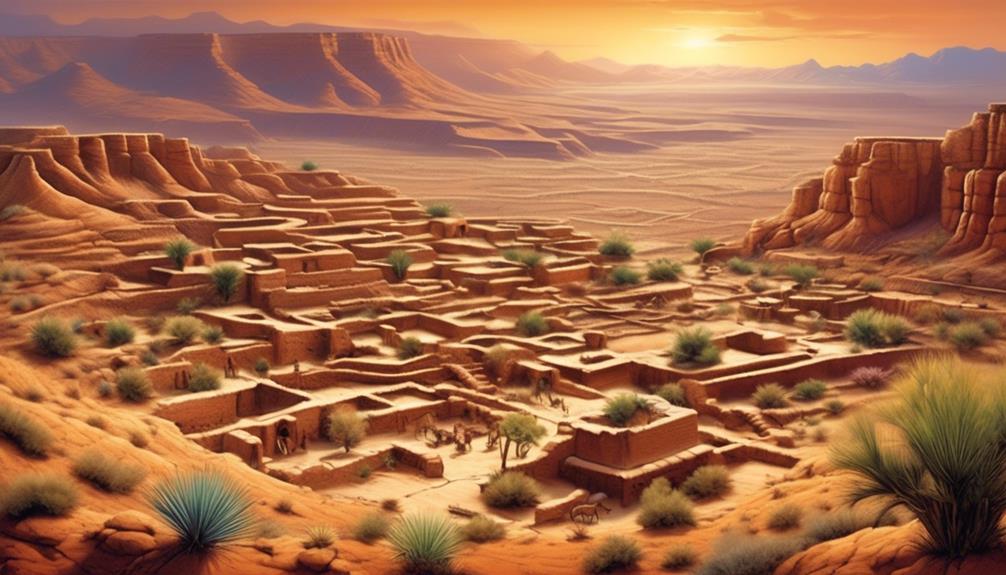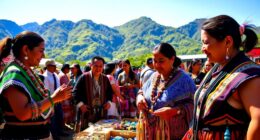Have you ever thought about the trading networks of ancient civilizations such as the Silk Road or the spice routes? It’s intriguing to contemplate, but have you ever pondered the trading networks of the Hopi tribe? Who were they engaging in trade with, and what types of products were being swapped?
The Hopi tribe engaged in a complex web of trade with various neighboring tribes and even early European settlers. Their exchanges ranged from pottery and artifacts with Pueblo tribes to agricultural goods with the Navajo tribe, and even commodities with Spanish settlers.
But the story doesn't end there. The impact of Anglo-American trade relations on the Hopi tribe unveils a fascinating chapter in their history that is often overlooked.
Key Takeaways
- The Hopi Tribe had a robust trade network with Pueblo tribes, facilitating the exchange of maize, cotton, pottery, and other goods.
- Pottery and artifacts played a pivotal role in cultural and economic interactions, with Hopi pottery craftsmanship being highly sought after by neighboring tribes.
- The Hopi Tribe exchanged agricultural goods with the Navajo Tribe, sharing expertise in farming techniques and cultivating crops.
- The Hopi Tribe traded pottery, textiles, and agricultural produce with Spanish settlers, enriching the material culture and daily lives of both parties.
Hopi Trade Network With Pueblo Tribes
The Hopi tribe maintained a robust trade network with the Pueblo tribes, facilitating the exchange of goods, resources, and cultural practices between the two groups.
The trade routes between the Hopi and Pueblo tribes were vital for the exchange of essential resources such as maize, cotton, pottery, and other goods. These trade routes not only served as avenues for physical exchange but also as conduits for the transmission of cultural practices, beliefs, and knowledge.
The Hopi and Pueblo tribes engaged in a rich cultural exchange through their trade interactions, which influenced art, religious ceremonies, and social customs. The trade routes allowed for the sharing of agricultural techniques, art styles, and religious rituals, which contributed to the development of a diverse and vibrant cultural landscape.
The exchange of goods and resources through these trade routes played a crucial role in sustaining the livelihoods of both the Hopi and Pueblo tribes. Additionally, the cultural exchange fostered mutual understanding and cooperation between the two groups, strengthening their intertribal relationships and contributing to the enrichment of their respective societies.
Exchange of Pottery and Artifacts
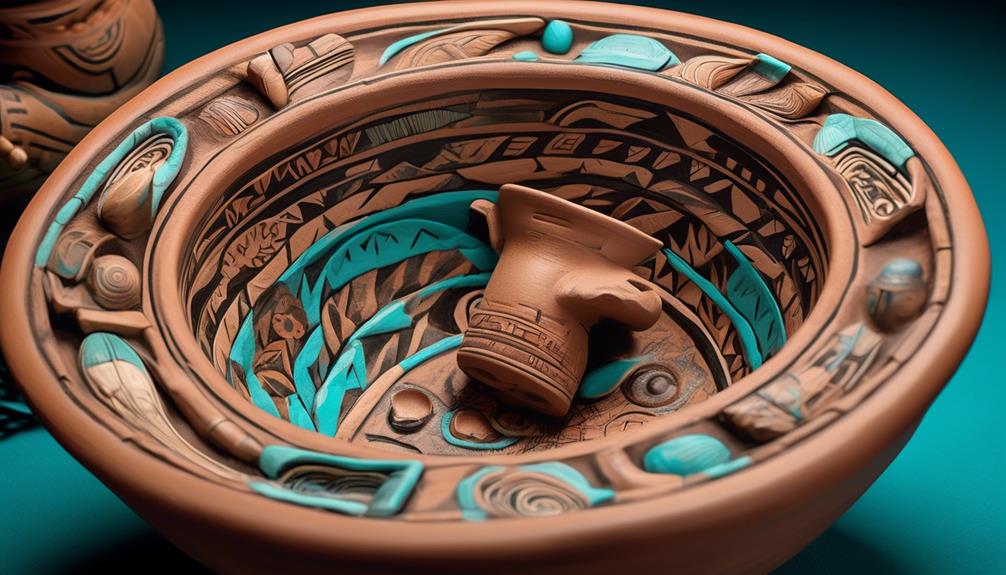
In our exploration of the Hopi Tribe's trading history, the exchange of pottery and artifacts played a pivotal role in the cultural and economic interactions between the Hopi and Pueblo tribes. The exchange of pottery and artifacts was not only a means of economic trade but also served as a significant channel for cultural exchange. The Hopi people were renowned for their pottery craftsmanship, creating exquisite pieces that were highly sought after by neighboring tribes, including the Pueblo tribes. In return, the Hopi acquired various artifacts, such as jewelry, baskets, and textiles, which enriched their material culture and daily lives.
| Benefits to Hopi Tribe | Benefits to Pueblo Tribes |
|---|---|
| Acquisition of diverse artifacts | Access to exceptional Hopi pottery |
| Enrichment of material culture | Exchange of artistic techniques |
| Strengthening of cultural ties | Enhancement of trade networks |
The exchange of pottery and artifacts between the Hopi and Pueblo tribes fostered mutual respect and understanding, contributing to the preservation and transmission of traditional craftsmanship and cultural practices. This cultural exchange through trade not only enhanced the material wealth of both tribes but also promoted harmony and cooperation within the region.
Agricultural Trade With Navajo Tribe
Engaging in agricultural trade with the Navajo Tribe proved to be a vital aspect of the Hopi Tribe's economic and cultural interactions during their historical development. The Hopi, known for their expertise in dry farming and irrigation techniques, exchanged agricultural goods with the Navajo, who were skilled in raising livestock and cultivating crops in arid environments.
This exchange wasn't just about goods; it represented a sharing of knowledge and expertise. The Navajo agricultural techniques, such as dryland farming and the cultivation of crops like corn, beans, and squash, were valuable to the Hopi, as they navigated the challenges of their arid environment. In return, the Hopi shared their knowledge of sustainable water management and dry farming methods.
The trade routes between the Hopi and Navajo Tribes facilitated the exchange of these agricultural goods and knowledge, fostering a mutually beneficial relationship. This collaboration not only enhanced the economic prosperity of both tribes but also enriched their cultural heritage, emphasizing the significance of cooperation and reciprocity in sustaining their communities.
Commodities Traded With Spanish Settlers
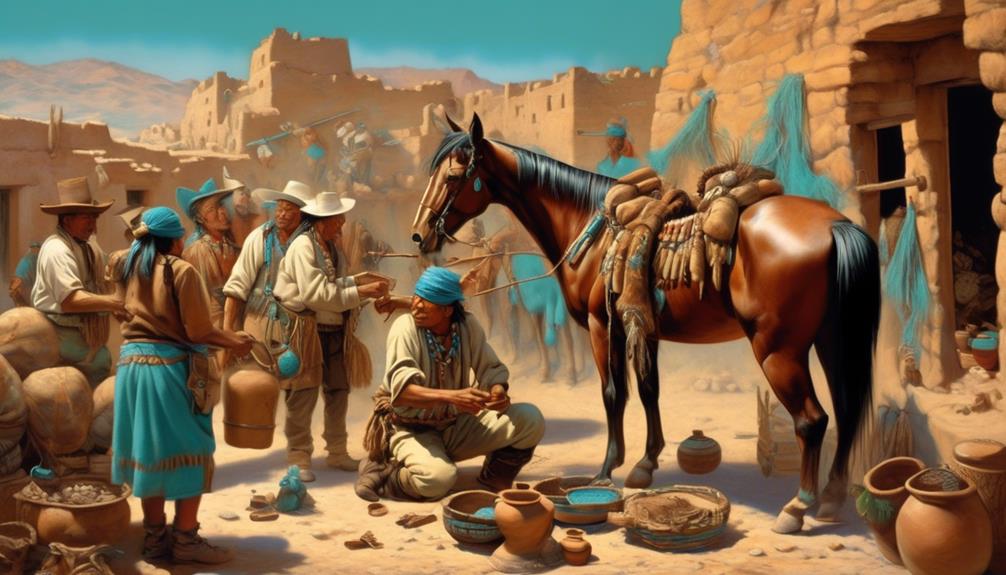
Throughout our historical interactions with Spanish settlers, the Hopi Tribe actively traded a variety of commodities, including pottery, woven textiles, and agricultural produce. These exchanges took place along established trade routes and had a significant economic impact on both the Hopi Tribe and the Spanish settlers.
- Trade Routes
- The Hopi people engaged in trade with Spanish settlers through well-established trade routes that connected their villages with Spanish outposts and missions. These routes facilitated the exchange of goods and allowed for the flow of various commodities between the two parties.
- Spanish settlers traversed these trade routes, bringing items such as metal tools, livestock, and European goods, while the Hopi Tribe offered their unique pottery, intricately woven textiles, and surplus agricultural products in return.
- Economic Impact
- The trade with Spanish settlers brought about an economic impact on the Hopi Tribe, providing access to new resources and technologies from the Spanish settlers. This exchange also allowed the Hopi people to acquire items that weren't locally available, enriching their material culture and daily lives.
- Conversely, the commodities traded with the Hopi Tribe, particularly their renowned pottery and textiles, became highly sought after by the Spanish settlers and other neighboring indigenous groups, contributing to the economic prosperity of the Hopi Tribe.
Impact of Anglo-American Trade Relations
The historical trade relations with Spanish settlers laid the foundation for the Hopi Tribe's subsequent interactions with Anglo-American traders, shaping the trajectory of their economic and cultural exchanges. The impact of Anglo-American trade relations on the Hopi Tribe was profound, leading to significant cultural assimilation and economic changes. The table below outlines some key aspects of this impact.
| Impact of Anglo-American Trade Relations |
|---|
| Economic Impact |
| Cultural Assimilation |
| Technological Exchange |
| Changes in Social Structures |
| Shifts in Power Dynamics |
The arrival of Anglo-American traders introduced new economic dynamics to the Hopi Tribe. This included a shift from traditional barter systems to a cash-based economy, impacting the way goods were produced and exchanged. Furthermore, the cultural assimilation resulting from increased interaction with Anglo-Americans brought changes in social structures and norms within the tribe. The technological exchange also influenced the Hopi way of life, affecting traditional practices and introducing new tools and methods. Additionally, the power dynamics within the tribe underwent shifts as a result of these trade relations.
Frequently Asked Questions
How Did the Hopi Tribe's Trade Network With Pueblo Tribes Develop Over Time?
Over time, the Hopi tribe's trade network with Pueblo tribes developed through increased interaction and cultural exchange. This development had a significant economic impact, as it allowed for the exchange of goods and resources that were essential for both communities' survival and prosperity.
The exchange of knowledge and traditions also played a crucial role in strengthening the bond between the Hopi and Pueblo tribes, fostering a deep sense of mutual respect and cooperation.
What Specific Types of Pottery and Artifacts Were Exchanged in the Trade Between the Hopi Tribe and Other Tribes?
We often ponder the intricate web of trade between the Hopi Tribe and other tribes. The exchange of specific pottery and artifacts served as a profound avenue for cultural exchange, leaving a lasting impact on our understanding of ancient societies.
The trade network fostered meaningful connections, allowing for the flow of artistic and utilitarian objects that enriched our lives and provided insights into the traditions and customs of diverse communities.
What Were the Key Agricultural Products Traded Between the Hopi and Navajo Tribes, and How Did This Trade Impact Both Tribes?
The impact of trade between the Hopi and Navajo tribes was significant.
Agricultural products traded, such as maize, beans, and squash, were essential for both tribes' sustenance and cultural practices.
The trade fostered interdependence and cooperation, strengthening social bonds.
Additionally, it allowed for the exchange of knowledge and traditions, enriching the cultural fabric of both tribes.
This reciprocal relationship helped them thrive in challenging environments and contributed to their resilience and prosperity.
What Were the Main Commodities Traded Between the Hopi Tribe and Spanish Settlers, and How Did This Trade Influence the Hopi Way of Life?
The trade between the Hopi tribe and Spanish settlers greatly influenced our culture and had a significant economic impact.
The introduction of new goods and tools from the Spanish settlers transformed our way of life, impacting our traditional practices and beliefs.
The trade also brought economic opportunities, providing access to resources that enhanced our agricultural practices and crafts.
This exchange significantly altered our daily lives and economic prospects.
How Did Anglo-American Trade Relations Impact the Traditional Trading Practices of the Hopi Tribe?
Anglo-American trade relations significantly impacted the traditional trading practices of the Hopi tribe. The colonization led to a shift in their traditional economy, causing adaptations to accommodate new goods and trading partners.
This cultural exchange resulted in a decrease in traditional trade practices and an increase in the adoption of Anglo-American goods. Over time, this shift altered the Hopi way of life, demonstrating the profound impact of colonial trade relations on indigenous communities.
Conclusion
In conclusion, the Hopi tribe engaged in extensive trade networks with Pueblo tribes, exchanging pottery and artifacts. They also traded agricultural goods with the Navajo tribe and various commodities with Spanish settlers.
Over time, the impact of Anglo-American trade relations brought about significant changes to their traditional trading practices. As a result, the Hopi tribe had to adapt and 'roll with the punches' to navigate the complexities of evolving trade dynamics in the region.
Mary is a passionate writer who brings creativity and a fresh perspective to our team. Her words have the power to captivate and inspire, making her an essential contributor to our content. Mary’s commitment to storytelling and dedication to promoting Indigenous culture ensures that her work touches the hearts of our readers. We’re fortunate to have her as part of our team.
